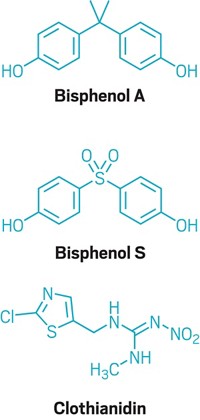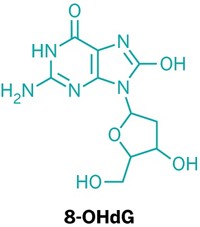Advertisement
Grab your lab coat. Let's get started
Welcome!
Welcome!
Create an account below to get 6 C&EN articles per month, receive newsletters and more - all free.
It seems this is your first time logging in online. Please enter the following information to continue.
As an ACS member you automatically get access to this site. All we need is few more details to create your reading experience.
Not you? Sign in with a different account.
Not you? Sign in with a different account.
ERROR 1
ERROR 1
ERROR 2
ERROR 2
ERROR 2
ERROR 2
ERROR 2
Password and Confirm password must match.
If you have an ACS member number, please enter it here so we can link this account to your membership. (optional)
ERROR 2
ACS values your privacy. By submitting your information, you are gaining access to C&EN and subscribing to our weekly newsletter. We use the information you provide to make your reading experience better, and we will never sell your data to third party members.
Endocrine Disruptors
Sunscreen Compound Linked To Endometriosis
Endocrine Disrupters: Researchers find higher risk of reproductive disorder in women with high urine concentrations of ultraviolet-blocking compounds
by Janet Pelley
March 22, 2012

Although sunscreens shield the skin from harmful ultraviolet light, they may have a dark side: Exposure to a compound commonly found in the lotions was associated with endometriosis in a small study in people (Environ. Sci. Technol., DOI: 10.1021/es204415a).
In endometriosis, the lining of the uterus starts to grow into other tissues, often causing pain and infertility. The condition is difficult to diagnose, but it affects approximately 11% of reproductive-age women in the U.S. and a large proportion of infertile women, according to Warren Foster, a reproductive biologist at McMaster University in Hamilton, Ontario, who was not involved in the study.
Scientists have connected the condition to the hormone estrogen. Endometriotic lesions grow and shrink with the body’s fluctuating levels of estrogen. And animal studies have found associations between the condition and compounds such as the environmental contaminants dioxins and polychlorinated biphenyls, which mimic estrogen’s effects. “But the real challenge is to go from experimental animal evidence to definitive human studies,” says Germaine Buck Louis, a reproductive epidemiologist at the National Institutes of Health.
So Buck Louis and her colleagues decided to investigate endometriosis in people in connection with a range of endocrine-disrupting compounds, including the benzophenone-containing compounds in sunscreens called UV filters. Although no previous evidence tied sunscreens to endometriosis, the scientists knew that some benzophenones mimic estrogen signalling, says Kurunthachalam Kannan, an analytical chemist with the New York State Department of Health, and an author of the study.
The scientists collected urine samples from 625 women in Salt Lake City and San Francisco. There were two groups of women. One group of 494 women had sought medical care to schedule surgery to diagnose endometriosis. “Because not all women with endometriosis have symptoms, women seeking care are just a portion of affected women,” says Buck Louis. So the other group were women who matched the ages and areas of residence of the first group, but had not sought care for endometriosis. Doctors gave this second group of women a pelvic magnetic resonance imaging scan to detect signs of the condition.
Before diagnosis, the researchers measured the women’s urine concentrations of five benzophenone sunscreen agents using liquid chromatography-tandem mass spectrometry. After diagnosis, the team compared the frequency of endometriosis of women in the surgery group to those women’s benzophenone concentrations. Women in the top 25% of concentrations of one sunscreen agent, 2,4-dihydroxybenzophenone, had a significantly greater rate of endometriosis than did those in the bottom 75%. The researchers say that due to the small size of the study, the exact increase in risk is unclear. In the MRI group, although the scans could only detect advanced stages of endometriosis, the scientists found a similar trend with the compound. They didn’t find a connection between the condition and any of the other four compounds.
Sonya Lunder, a senior analyst at the Environmental Working Group, an advocacy organization, calls the study “interesting and compelling” because it raises concerns about common compounds. “Benzophenones are also added to plastics and cleaning products for UV protection,” she says.
But McMaster’s Foster points out that these associations do not imply that the compound causes endometriosis. So, he adds, without further studies, “People should definitely not throw out their sunscreens.”





Join the conversation
Contact the reporter
Submit a Letter to the Editor for publication
Engage with us on Twitter